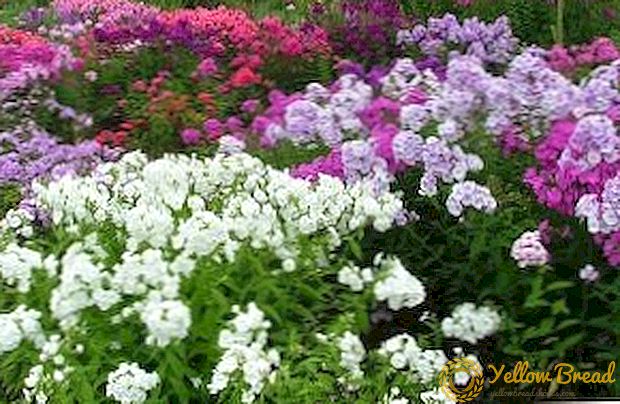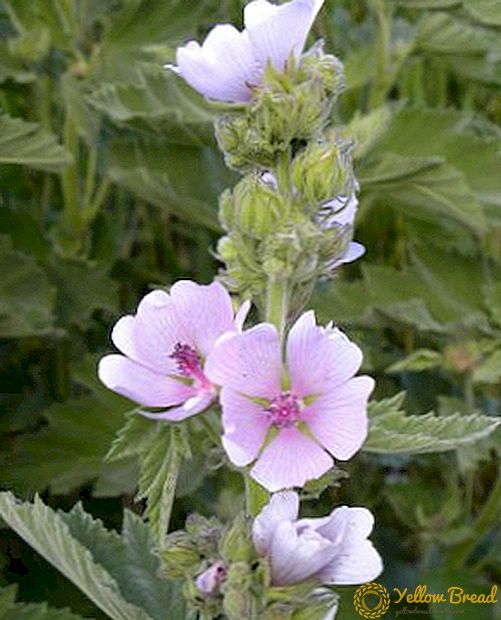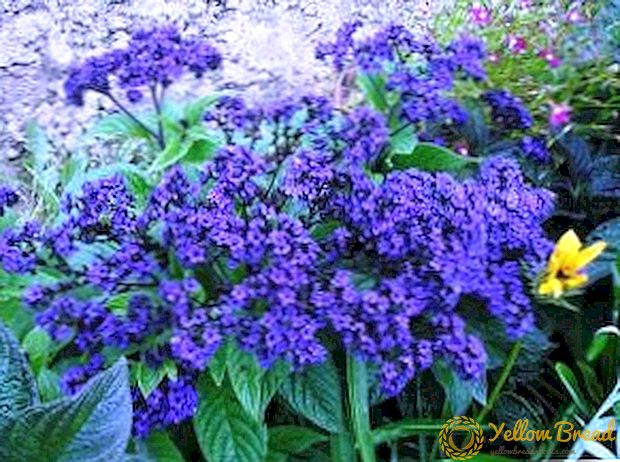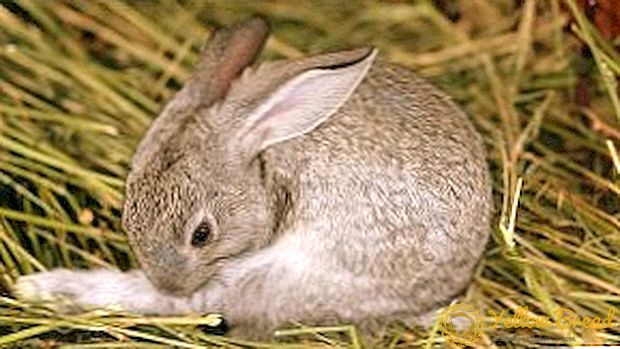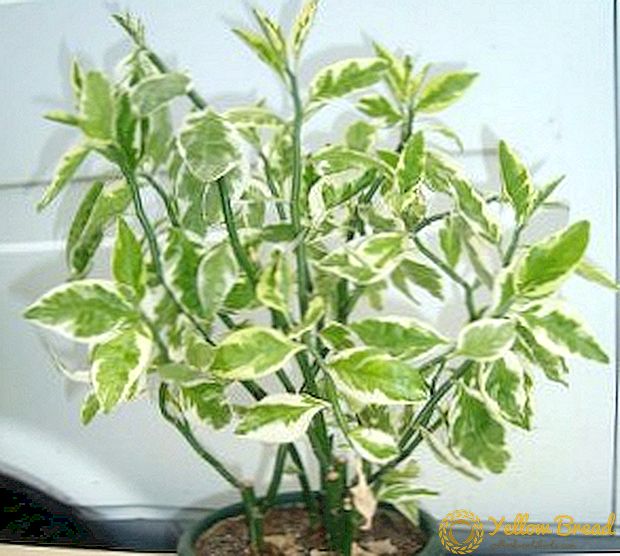 Pedilanthus is a tropical unpretentious plant, distinguished by exceptional decorativeness. Its unusual exotic look conquers flower growers and serves as an ornament to any home greenhouse. He is unpretentious in care, but still requires adherence to certain rules, like all tropical inhabitants.
Pedilanthus is a tropical unpretentious plant, distinguished by exceptional decorativeness. Its unusual exotic look conquers flower growers and serves as an ornament to any home greenhouse. He is unpretentious in care, but still requires adherence to certain rules, like all tropical inhabitants.
- Plant description
- Types of pedilanthus
- Optimal conditions in the house for growing
- Lighting
- Temperature
- Peculiarities of home care
- Watering
- Air humidity
- Feedings
- Pruning
- Home Transplant Rules
- Possible difficulties in growing: diseases and pests
- Breeding methods
- Seeds
- Cuttings
Plant description
Because of its unusual flower, the pedilantus was named: pedilon - a shoe, anthos - a flower. Actually, the flower itself is not particularly beautiful, the bracts, brightly colored and having an unusual shape, give it charms.
A powerful, fleshy stem in nature can grow up to 2.5 meters, at home, if not to form a flower, it grows up to a meter high.
The oval-shaped leaves, pointed at the ends, are covered with a layer of wax, indicating its unique ability to survive in a very hot climate.
Types of pedilanthus
Belonging to the euphorbia family, pedilanthus is of fifteen species that are not particularly similar in appearance. The most common types of pedilanthus:
- Titloidal - has the typical features mentioned above;
- A finca is not a very large bushy flower with a stem bare at the bottom and leaves that are located closer to the top, forming a spreading crown, loves loose substrates;
- Large-fruited - leafless plant that stores water with the help of stems. Leaves resembling scales, almost atrophied, better than other members of the family endures the heat;
- Shportsevy - a plant of the woody type, evergreen, in nature it grows up to several meters;
- Koalkomanensky - may look like a bush or a small deciduous tree with exceptional beauty flowers of red, pink or peach flowers.



Optimal conditions in the house for growing
It is precisely pedimantus titimaidous that is often chosen for the home greenhouse, therefore, using his example, consider the care of this curious plant.
The purpose of the grower is to take care of the pedilanthus, creating as close as possible to the natural conditions.
Lighting
Pedilanthus is very fond of bright light, but direct sunlight should be avoidedThe light must be diffused. The best choice for the location of the plant - the western window sill. The pedilanthus standing on the southern window-sill needs shading, especially in summer, otherwise the leaves will not be burned.
In summer, a “vacation” in the garden, on the balcony or on the veranda, of course, on the condition of shade, will have a beneficial effect on the plant. Pedilanthus loves fresh air, and if its leaves turn pink, he is pleased and says "thank you."

With the arrival of winter, on the contrary, the southern window sill will be an ideal place for your pet, besides, it will require lighting up to 12-hour daylight hours.
Temperature
In the warm season, it is desirable to observe the air temperature within 25 degrees. With sufficient constant lighting and air flow, the temperature can be higher. In autumn and winter, it is necessary to ensure the temperature regime in the range of 14-18 degrees.
Pedilanthus needs such a rest period to ensure flowering.
The soil temperature is very important for the plant, it should be the same both in depth and on the surface, it can vary within 2-3 degrees, not more.
If this condition is violated, the roots will not be able to consume food. Knowing this feature, it is impossible to put a pot with a pedilantus on a cold surface, this is especially important in winter.
To preserve the balance of temperatures, a wooden board, a piece of foam or other insulating material is placed under the plant container.

Peculiarities of home care
It is noteworthy that the way the plant looks, depends on the conditions of detention. Thus, cuttings of one flower, separated at the same time, can turn into unlike adult plants due to the difference in growing conditions: humidity, watering frequency, feeding, formation, and so on.
Watering
You can have a healthy and beautiful plant, if you provide it with proper care and establish a watering regime. With insufficient watering pedilanthus sheds leaves and loses its aesthetic appearance.
If the leaves look wilted and the substrate dried, it's time to water. The substrate should not be dry, it should always look hydrated.
Summer should be watered every other day, and if necessary even more often, in the winter no more than once a week, but again without drying out the soil. The leaves begin to wither - it's time to water.

Air humidity
A pleasant feature of pedilanthus is that it is unpretentious in the matter of air humidity. He will feel comfortable in a dry room, although more suitable for him is a room with a relative humidity of 60%.
Plants should not be placed near the battery, and pedilanthus is no exception. there is several techniques for increasing humidity, which can be used as needed:
- Place a container filled with water near the flower;
- To pour on claydite or pebbles on the tray where the plant pot is located, moisten them;
- On hot days, pedilanthus is better to spray in the evening, when the sun has already gone down and the night is ahead, but it is possible in the morning before it has even risen. In the winter, spraying can be carried out if the room is hot and the air is dry.
Sprayed from a fine spray with water at room temperature, naturally settled.

Feedings
During the period of active growth phase, that is, from spring to autumn, fertilizing is carried out. The frequency of the event - once every three weeks.
If organic fertilizers are used, it is better to prefer mullein. The composition of mineral fertilizers nitrogen allowed a minimum amount. Its increased concentration leads to the loss of leaves of characteristic color and to further rotting of the roots.
In winter, there is no need to feed.
Pruning
If you do not engage in the formation of pedilanthus, it randomly stretches upward, lengthening the stems and dropping the leaves in their lower part.
To maintain a neat appearance, as well as the stability of the pedilanthus, it is desirable to regularly transplant and trim. The cuttings obtained in this way go on reproduction and give new material for planting.
Pedilanthus has a period of growing season and rest. In the warm season, it is actively growing, shoots and gives new leaves, in the cold - the processes slow down and the plant falls into a stupor. When the pedilanthus comes out of the resting phase, the flower is pruned.

It is about the end of February or the beginning of March, when the sap flow slows down, which will enable the plant not to lose a lot of moisture, and the cuts - to dry quickly. Over the summer, the pedilanthus will perfectly recover and branch its crown, which is why its appearance will only win.
The formation is carried out as follows:
- A sharp clean knife cuts off the escape along the internode itself;
- The slice is dried from the milky juice and treated with crushed activated carbon;
- Before the start of pruning, they stop watering the plant and resume after a few days when the wound dries.
Home Transplant Rules
It is not recommended to disturb pedilanthus often, transplantation is performed only when the roots become cramped and they crawl out of the hole below. The development of the root system is slow; the plant needs to be transplanted every three to four years.
Pedilanthus is quite a popular home plant, it is paid attention to and, as is often the case, mental properties are attributed, funny and not so tied to it: if a stolen cutting has taken root, to career growth, the given pedilantus is to life changes, the pedilantus at work place - to professional troubles, the appearance of the plant with colorful leaves - to the care of men from home.
Transplantation is done at the same time as pruning - at the very beginning of the growing season.
The capacity for transplantation should be chosen a little more spacious than the previous one - 1-1.5 centimeters wider in diameter. The height of the wall should be approximately equal to the diameter. It is good to stop the choice on a ceramic pot with a large drainage hole.
The soil should be light and loose, waterproof and breathable. Soil mixture for cacti and succulents suitable.

Pedilanthus transplantation scheme:
- Put a claydite or other drainage on the bottom of the pot with a layer of 2-3 centimeters;
- Fill with disinfected soil to half of the pot;
- Remove pedilanthus from the former habitat, it is easy to shake off the ground from the roots, not trying to get rid of it completely;
- It is necessary, carefully inspecting the roots, to rid the plant of unnecessary elements: dry, dead, blackened, slimy; if fragments prone to decay are found, they should be removed, grabbing 3-5 centimeters of a healthy-looking plot;
- Set the plant in a new pot and fill it with soil, shake its contents slightly;
- Water the transplanted plant and clean it for a week in a dark place, which will reduce stress and improve adaptation.
- After the done flower should be returned to its original habitat and care for him as before.

Possible difficulties in growing: diseases and pests
If you become a victim of improper care or harmful parasites, pedilanthus can put you in front of some problems, for example, change their appearance or even fall off leaves, what to do in such cases? Some Examples of possible problems:
- Dropping the leaves - this is normal before the rest period; at another time, watering and lighting should be reviewed;
- The tips of the leaves dry - hit by the direct sun or low humidity;
- Excessive stretching of the stem, its thinning, loss of leaves coloring - in summer there is not enough light, in winter it is too warm;
- No bloom - no dormancy phase was provided or the content did not fit during this period;
- The leaves change color to a poisonous green, the petiole ceases to be visible - an excess of nitrogen, you need to change the fertilizer to the version without this substance.
- The plant becomes asymmetrical, the shoots are uneven - there is not enough lighting, if you cannot provide plenty of light, you should turn the pot from time to time;
- A sharp abundant leaf fall - a sudden drop in temperature;
- Blackening of the stems at the base and leaf stalks - rot from excess moisture or excessive density of the soil;
- Slightly cobweb in the bottom of the leaf - spider mite, wash the leaves with soap, treat with acaricides;
- The leaves are deformed, tiny green or yellowish insects are visible on the plant, there are sticky drops - aphid, the reason why the leaves are curled at the pedilanthus, remove the affected parts, rinse with water, treat with insecticide;
- The leaves turn yellow and roll up along the edges, small white insects fly off the plant, brown larvae remain - whitefly, process with soapy or alcohol solution, insecticide;
- Similar to dirty cotton wool, drying and changing the shape of the stalks - mealybug, cleaning with alcohol, washing with soap, the use of an insecticide.

Breeding methods
Nature has provided two methods of reproduction for pedilanthus - seed and vegetative, the first one being more popular in its bosom.
At home, however, it is difficult: it is difficult to acquire quality seeds, but it is simply impossible to get it yourself, they are almost not tied up, and if this happens, they lose germination after sowing.
For home pedilanthus a more realistic way of reproduction is grafting.
Seeds
When choosing seeds, the labeling on the package should be examined: there must be an expiration date.
They are sown in the ground, a third consisting of sand, sprayed and covered with glass or film, put in a warm place.
At the initial stage, the lighting does not play a role, but shoots love the sun, but not direct. The glass is cleaned, the sprouts are regularly sprayed.
When they get stronger, you can sit in personal tanks.

Cuttings
Nature invented a vegetative method of reproduction to root broken, overgrown and dead stalks.
Flower growers are widely used in this way when propagating their pet. For example, when pruning a plant, the host “unwinds” with cuttings that can be successfully rooted.
Pinching pedilanthus as necessary, propagation by cuttings can be practiced during the whole vegetative period, but it is better to do it at its beginning, then the plant will have time to strengthen. Some tips when propagating by cuttings:
- The length of planting cuttings should be 8-10 centimeters or 3-4 internodes.
- Lower leaves on them must be removed.
- To remove the toxic juice, the cuttings are washed in water and dried using paper or a soft cloth.
- Leave to dry for about a day to prevent rotting.
- After a rest, they are placed in the ground, watered with separated water and make a mini-teplichka using a can.
- Contain at a temperature of 20-25 degrees 2-4 weeks, watered moderately.
- Pedilanthus do not like condensate cuttings, you should get rid of it.
Pedilanthus is beautiful and unpretentious, which makes it very convenient and desirable for gardeners. The originality of his appearance creates him loud glory. This plant is able to please you for many years if you give it a little of your attention and care.

